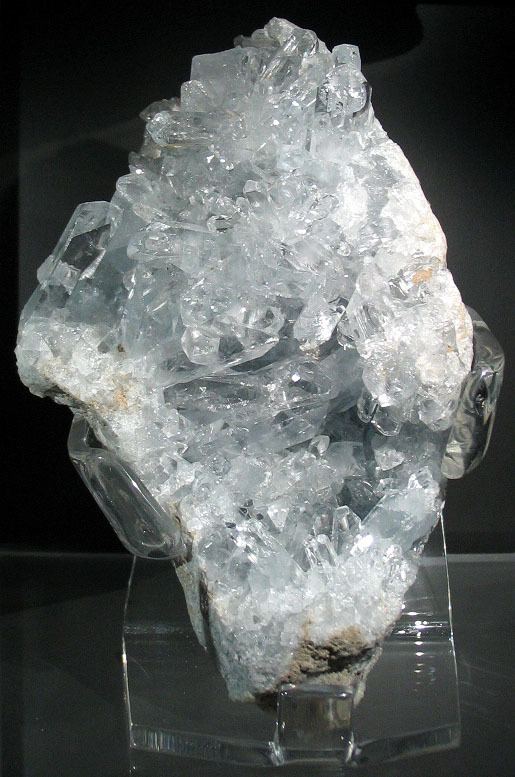Category Sulfate minerals Crystal system Orthorhombic | Strunz classification 7.AD.35 Space group Pnma | |
 | ||
Formula(repeating unit) SrSO4 sometimes contains minor calcium and/or barium Crystal class Dipyramidal (mmm)H-M symbol: (2/m 2/m 2/m) | ||
Celestine or celestite (SrSO4) is a mineral consisting of strontium sulfate. The mineral is named for its occasional delicate blue color. Celestine is the principal source of the element strontium, commonly used in fireworks and in various metal alloys.
Contents
Occurrence
Celestine occurs as crystals, and also in compact massive and fibrous forms. It is mostly found in sedimentary rocks, often associated with the minerals gypsum, anhydrite, and halite.
The mineral is found worldwide, usually in small quantities. Pale blue crystal specimens are found in Madagascar.
The skeletons of the protozoan Acantharea are made of celestine, unlike those of other radiolarians which are made of silica.
In carbonate marine sediments, burial dissolution is a recognised mechanism of celestine precipitation.
It is sometimes used as a gemstone.
Geodes
Celestine crystals are found in some geodes. The world's largest known geode, a celestine geode 35 feet (10.7 m) in diameter at its widest point, is located near the village of Put-in-Bay, Ohio, on South Bass Island in Lake Erie. The geode has been converted into a viewing cave, Crystal Cave, with the crystals which once composed the floor of the geode removed. The geode has celestine crystals as wide as 18 inches (46 cm) across, estimated to weigh up to 300 pounds (135 kg) each.
